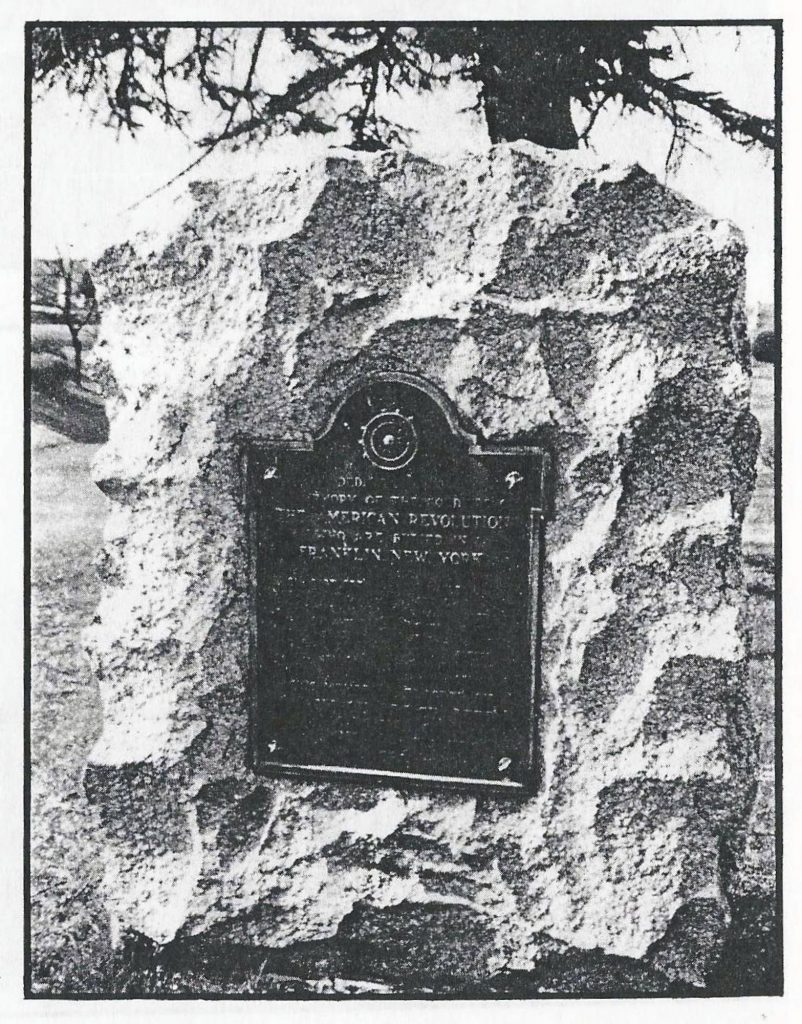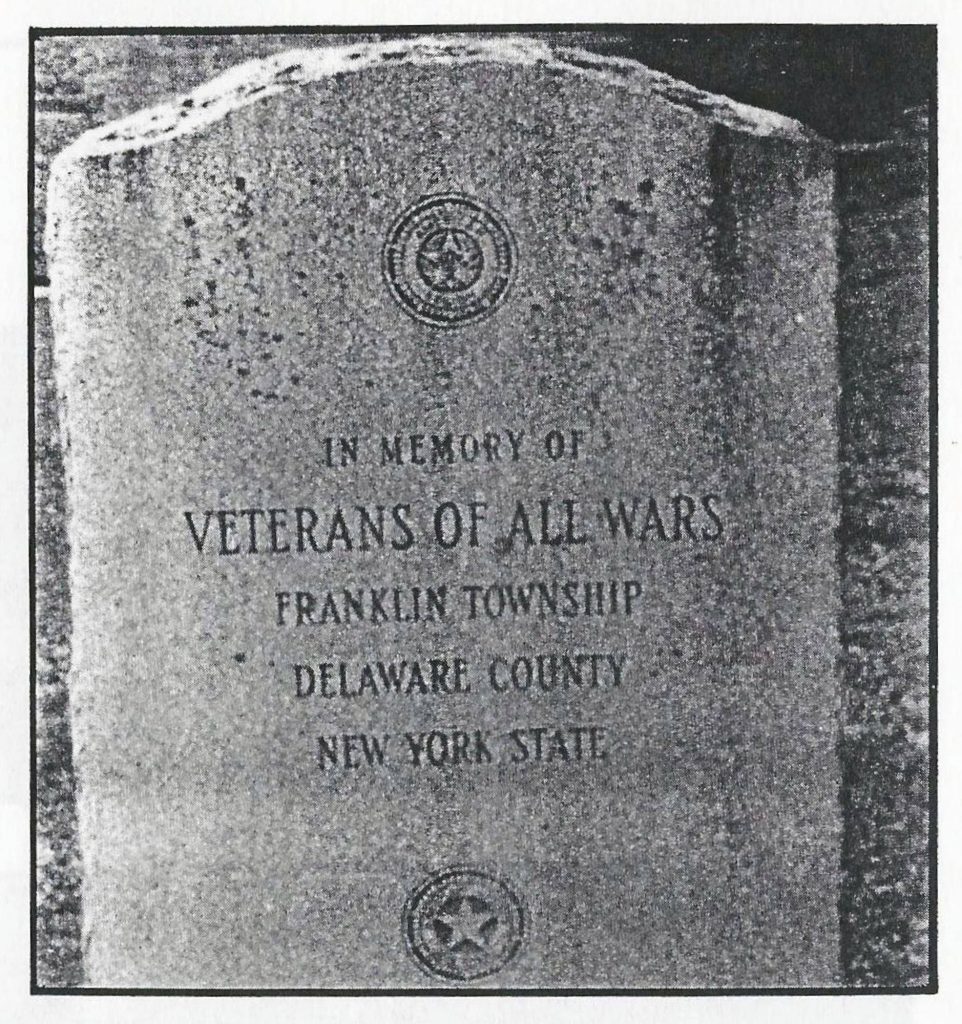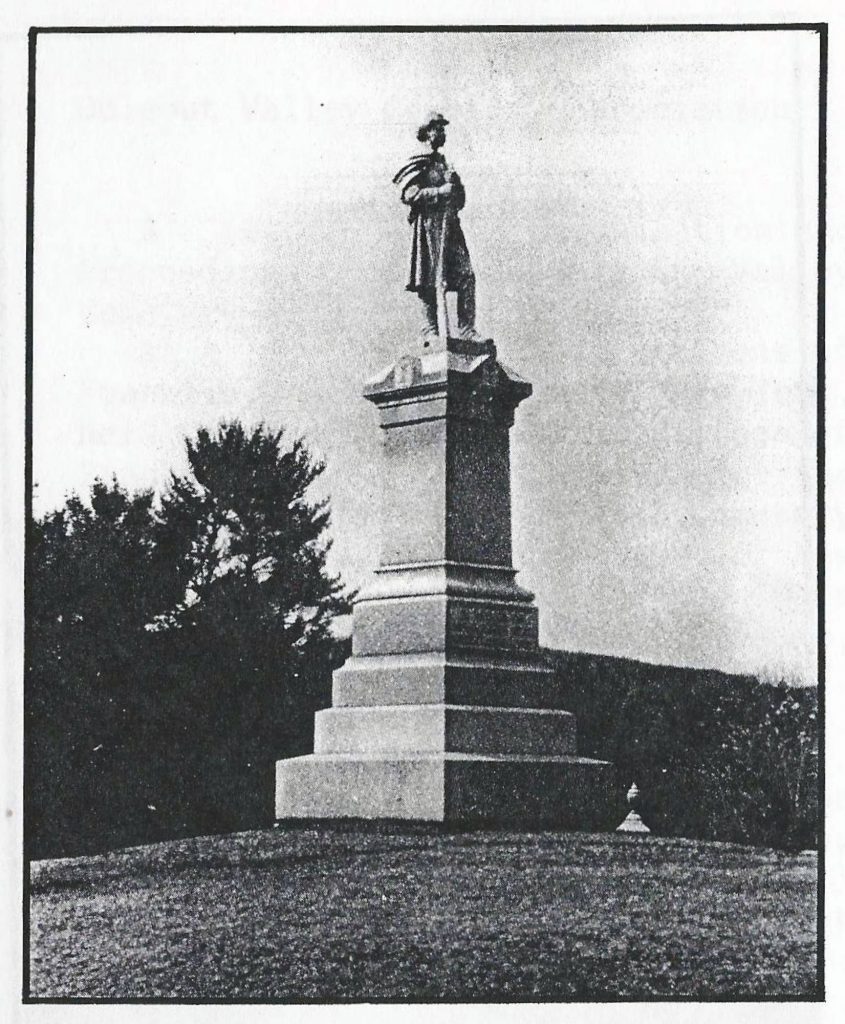The New York State Legislature early recognized the need for specific burial grounds separate from churches and for regulations regarding their care. An act of April 27, 1847, authorized the incorporation of rural cemetery associations. Amos Douglas, he of the elaborate monument, lived then on Center Street in the house now occupied by Sonja and Richard DeFrances. He lobbied insistently to have the Ouleout Valley Cemetery located on his property, between his house and Ouleout Creek, with himself as manager.
He did not prevail. On November 19, 1873, the Ouleout Valley Cemetery Association was formed. Twenty prominent local citizens lent one hundred dollars each toward the purchase of twenty-one and a half acres of land from G.H. Barnes. The list of lenders included: Sylvester Wheat, Wm. B. Hanford, Albert E. Sullard, Beriah L. Bowers, Charles Payne, Samuel M. Allen, George Stilson, G.H. Barnes, F.W. Bartlett, Elijah Roe, S.G. Smith, Abial Drake, Benjamin T. Cook, Samuel Lloyd, Isaac Elderkin, Andrew T. Treadwell, Sherill L. Slade, Jacob Gillett, Daniel Miller, Henry S. Edwards.
At a cost of $260, the cemetery was officially surveyed and mapped in 1875. Plots on a mapped runway were sold for forty dollars per four hundred superficial feet. Plots of the same size, not on a runway or alley, sold for thirty-two dollars. In 1881, the Association banned running plants and vines from the cemetery.
Over the years, succeeding regulations have been enforced and new acreage has been added. The Ouleout Valley Cemetery, which was included in the National Historic Register in 1984, is today a tribute to the care of its trustees.
Erastus Edgerton was an early benefactor. For one thousand dollars, he purchased and donated the fountain in 1884 and gave two thousand dollars for the development of a water system. That system, consisting of a reservoir on a hill across the turnpike and a waterline to the cemetery, served the burial ground until 1989, when a new well and waterline were installed. At the same time, an underground electric line was extended from the highway to the cemetery’s toolshed.
John Hariff was appointed first superintendent of the cemetery in 1878. Since that year only nine superintendents have been employed including Everett “Goldie” Goldsmith and our present superintendent, Robert Johnson.
The stone wall in front of the cemetery was built in 1889-1890 and the beautiful gate was erected, a gift of Elizabeth Wilcox. A donation by Mary Loveland allowed the construction of a vault to hold remains during the winter months.
Graves in Franklin’s cemeteries contain the remains of many veterans of our wars. They are decorated with flags each Memorial Day by the local American Legion post.



The Ouleout Valley Cemetery has also provided a final resting place for some other significant Americans. Lewis Hine, a noteworthy photographer in the early 1900s, was an uncle to George Rich through marriage. The Reverend Willard Parsons was instrumental in establishing the NYC Fresh Air Fund. James McCall was a founder and publisher of McCall’s magazine.
Historical information from the publication Through the Years in the Town of Franklin 1792-1992. Copies are for sale at the Franklin Railroad and Community Museum.